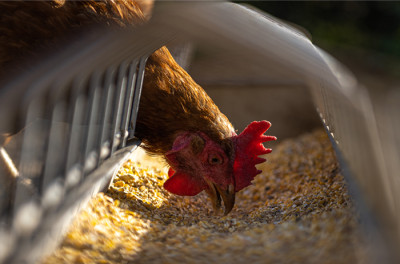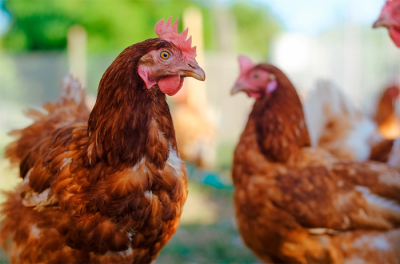

The Importance of Ventilation in Poultry Farm
High temperature can be one of which factors that can cause chickens to experience heat stress. Heat stress is a condition in which the chicken's body fails to maintain its body temperature (thermoneutral zone), so there’s an imbalance between the body heat generated and the heat released from the body. Chicken is a warm-blooded animal that doesn’t have sweat glands, so there are limits to a chicken’s ability to regulate its body temperature.
 The internal temperature of an adult chicken is around 40oC – 41,66 oC, if this temperature reaches 43,3 oC - 45,6 oC , the chicken is in danger of death. In general, chickens produce heat from metabolic processes in the body, including maintaining life, growth, and egg production. In addition, heat sources can also come from the cage environment such as air temperature, roof/wall type, wet and moist litter which can also add stress to the chickens.
The internal temperature of an adult chicken is around 40oC – 41,66 oC, if this temperature reaches 43,3 oC - 45,6 oC , the chicken is in danger of death. In general, chickens produce heat from metabolic processes in the body, including maintaining life, growth, and egg production. In addition, heat sources can also come from the cage environment such as air temperature, roof/wall type, wet and moist litter which can also add stress to the chickens.
Chickens give off body heat by four mechanisms: radiation, convection, conduction, and evaporation. When the chicken can no longer control its body heat after using the three mechanisms (radiation, convection, and conduction), the chicken will use the evaporation or panting mechanism to lose heat or its body just keeps heating up, because the chicken has no sweat glands, she loses the heat by its respiratory system. Panting becomes effective when the humidity level is not too high.
In older chickens, the comfort zone for growth ranges from 20 – 25°C with humidity ranging from 50 – 70%. Air that is hot and humid causes more severe stress conditions than air that is hot but dry. Heavy / high-intensity panting will make the chickens tired because their respiration ratio can increase 10 x from their resting respiration ratio. This causes the chickens to lose excess CO2 and makes the blood plasma pH increase which is known as respiratory alkalosis. Potassium and phosphate levels will be depleted while sodium and chloride will rise in the blood. This condition, of course, will cause the growth ratio to be disrupted and for laying hens of course egg production will decrease.
Broilers experiencing heat stress will avoid other chickens, tend to be quiet, reduce movement activities to reduce the addition of body heat, approach cooler surfaces, wings outstretched, and feathers more erect. Feed intake will decrease but water intake will increase, diverting blood from the internal organs to the skin which makes the skin color dark. In layers, the condition of heat stress chickens will reduce egg production, egg shells are thinner, and egg sizes are smaller. Chronic heat stress will cause damage to the intestinal villi and leaky gut syndrome. This causes the integrity of the intestinal villi cells to decrease, digestive ability is also reduced so that nutrient absorption is not optimal, pathogenic bacteria will exploit this condition to enter the blood plasma causing systemic infections.
Prevention and treatment of heat stress, one of which can provide Astresvit®, both of which contain multivitamins (vit A, D3, E, B12, B6, C, K3, B1, B2, folic acid, NaCl, KCl, B5 and B3) which are useful for maintaining balance the body's electrolytes and maintain the health of chickens from stressful conditions, Astresvit® is packaged in a water-soluble powder form so that it is easy to apply, with a dosage of 1 – 2 g/liter of water for 3 – 5 days.
You may also like

Probiotics’ Impact on Lowering Ammonia Levels and...
Air quality within poultry houses is a crucial fac...

The Role of Prebiotics in Supporting Gut-Associate...
Gut-Associated Lymphoid Tissue (GALT) is the large...

Gut Health, Strong Flock: The Key to Optimal Poult...
Poultry productivity, particularly in the broiler...